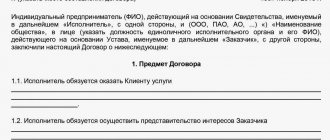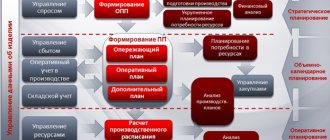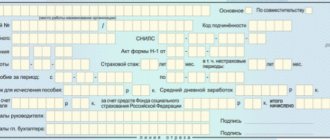Normative base
There is a Federal Law “On Production Cooperatives” dated 05/08/1996 N 41. It regulates the following aspects:
- PC education.
- Activity.
- Shutdown.
The law regulates artels engaged in such activities as:
- Production of products.
- Implementation.
- Construction of facilities.
- Various services.
- Mining.
- Working with secondary raw materials.
- Marketing, medical services and more.
The regulations governing activities depend on what exactly the cooperative does. For example, the activities of agricultural entities are regulated by Federal Law No. 198 of December 27, 2005.
The rules regarding production cooperatives are contained in the Civil Code of the Russian Federation. General provisions can be found in Articles 106.1-106.6. The definition of a production cooperative is specified in paragraph 1 of Article 50 of the Civil Code of the Russian Federation. This is a commercial association whose main goal is to make a profit. More detailed instructions are contained in Federal Law No. 41.
FOR YOUR INFORMATION! The form in question differs from consumer cooperatives. The latter are non-profit associations.
Production cooperative
The procedure for the creation and further activities of production cooperatives is regulated by the Civil Code of the Russian Federation, Articles 106.1 - 106.6, Federal Law No. 41-FZ of May 8, 1996 “On Production Cooperatives”, as well as the Law “On State Registration of Legal Entities and Individual Entrepreneurs”.
Members of the cooperative bear subsidiary liability for its obligations in the manner prescribed by its Charter. The total number of members of a production cooperative cannot be less than 5. Members of the cooperative can be citizens of the Russian Federation, foreign citizens, and stateless persons. A legal entity participates in the activities of the cooperative through its representative in accordance with the Charter of the cooperative.
The only constituent document of a production cooperative is the Charter.
The minimum size of a production cooperative's mutual fund is not established by law. Members of the cooperative are required to pay at least 10% of their share contributions before the state registration of the cooperative, and the remaining part - within one year from the date of registration. Contributions to a mutual fund can be made in cash, securities, other property, or intangible assets. The assessment of a share contribution exceeding 250 minimum wages established by federal law must be made by an independent appraiser.
A member of a cooperative has the right to transfer his share or part thereof to another member of the cooperative, unless otherwise provided by law and the charter of the cooperative.
The highest governing body in a production cooperative is the general meeting of its members, which decides the most important issues of the cooperative's activities, including electing the permanent executive bodies of the cooperative - the board and/or chairman of the cooperative. The executive bodies manage the activities of the cooperative between meetings, resolving issues that are not within the exclusive competence of the general meeting.
Registration of production cooperatives is carried out by tax authorities. The tax authorities must provide information about the registered enterprise: passport data and TIN (if any) of the members of the cooperative - individuals, information about the composition of the executive bodies of the cooperative, information from the Unified State Register of Legal Entities about participants - legal entities and copies of their constituent documents, the name of the cooperative being created, the main types activities, information about the size, structure and payment procedure for the mutual fund, the chosen taxation system (general, simplified), the exact address of the cooperative's location.
The location address can be rented or own non-residential premises or the place of residence of the manager.
Depending on the nature of the activity, there are:
* Production cooperative;
Production agricultural cooperative. The advantages of a production cooperative (PrK), operating under law 41-FZ, including:
· The PrK can have as many members of the PrK as desired (100-200-1000, etc.) and the PrK will be on the simplified tax system (simplified taxation system).
· The tax burden can be legally reduced by 1.5-2 times, compared, for example, with an LLC, PJSC or JSC.
· PrK is perhaps the best legal “asset storage facility” in Russia.
· The Labor Code does not apply to members of the PrK.
· Possibility of increasing labor productivity by tens of% or even several times in relation to state and private enterprises (LLC, PJSC, JSC).
· Some members of the PrK (individuals or legal entities) can only make a share contribution (money, property, intangible assets) and receive dividends from the profits of the PrK. In this case, no activity can be carried out in the PRK.
· Members of the PRK who take personal labor participation there are paid for the final result, and not for the “process of work”.
· Members of the PRK may be legal entities.
· PrK can engage in virtually any type of activity that is not prohibited by law, like any commercial structure.
· A PRK can be established by 5 individuals, to whom no requirements are actually imposed.
Main features
Production characteristics meet the following criteria:
- Joining is on a voluntary basis.
- Each participant has the right to a part of the association.
- Each participant has the right to vote at the meeting, which allows them to take part in decision-making regarding the cooperative.
- A cooperative is formed for a specific activity.
- Each participant must make a contribution either in material form or in the form of personal participation.
If an association does not meet the listed characteristics, it cannot be considered a production cooperative.
Participants, their number, rights and obligations
There are two types of participants in this association:
- Members of the cooperative : those who made a share contribution and are a full member of the organization. They can participate in work, they can take part in decisions that will influence the future fate of the subject. Their number cannot be less than five people .
- Workers : those who are hired under an employment contract as specialists in any other field. They do not have the right to vote, should not participate in share contributions, and work under conditions usual for hired labor. Excluding those who work seasonally and therefore not for long, their total number should not be greater than the total number of members of the household.
The responsibilities of the employees are very simple:
- Do not violate the law and corporate ethics.
- Follow safety precautions.
- Do not miss work without good reason.
- Carry out your duties honestly.
In general, they are not too different from the responsibilities of any hired workers, as are their rights:
- Receive wages in the amount specified in the contract and on time.
- Have the opportunity to go on sick leave and vacation.
The responsibilities of members are more specific:
- Take part in the labor activities of the cooperative or, if for some reason this is not possible, invest financially.
- Take part in important votes on issues that determine the future fate of the organization, with no more than one vote per person, regardless of the size of labor or financial contributions.
- Make your part of the contribution – both the share and any additional contributions.
- Be responsible for the debts of the association with your personal property .
At the same time, their rights:
- Transfer a share to any other member and protest against its transfer to a person or organization if this does not suit the member of the organization.
- Leave the association at will with all payments provided for in the Charter.
- Take part in voting.
You can read all the features and characteristics of a partnership of faith in this article. If you are interested in what unitary enterprises are, check out this material.
Advantages and disadvantages
A production cooperative has the following advantages:
- Distribution of profits between participants depending on their contribution to the association. In a similar way, assets are distributed after the liquidation of an artel. This approach motivates participants to improve and increase their labor contribution.
- Any number of participants can join an artel. There are no restrictions.
- Participants are given equal rights. Each party has equal authority to manage the association.
- Each participant has the right to sell his share. That is, your share can be easily converted into cash.
- Quickly achieve your goals by combining the resources of all participants.
Artel is characterized by the following disadvantages:
- If the cooperative incurs a large debt, all participants bear responsibility for it.
- A person is responsible for debts with personal property. The liability of a participant is limited to the size of his share.
- Activities are carried out jointly. All participants will have to bear responsibility for the wrong decisions made by others.
All the advantages and disadvantages of a production cooperative are relative. That is, with proper organization of activities, the artel will not suffer from characteristic disadvantages. If the production cooperative operates illiterately, you can forget about the characteristic advantages. Significant shortcomings of the artel appear only when a large debt has accumulated.
List of constituent documents
It will be short, since such a document is only the charter of the enterprise. It must include the full name of the organization, as well as information about its actual location. It is in the charter that there must be all the information about the amount of share contributions, as well as the conditions for making them. Information about the responsibility of members of the cooperative in case of violation of the procedure for their contribution, as well as about the conditions for personal labor participation in the activities of the enterprise, is also included there. For any violations, fines or other measures may be applied, information about which is also included in the charter.
In addition, there should be information about the procedure for distributing profits and losses, as well as detailed responsibilities of the production cooperative and all its members. The functions and powers of all executive bodies are described in full and in great detail, including in cases where decisions can be made by the chairman of the board individually.
If we are talking about terminating membership in an organization, then the document also includes information about the procedure for paying the share contribution, and the procedure for accepting new members and expelling employees from the enterprise must also be considered. It also describes in detail the process of leaving the membership of the cooperative, as well as all cases when a member of the organization can be excluded from it. Data is also entered on all existing branches, as well as on the possible procedure for reorganization and complete liquidation. In the course of the organization’s activities, other information necessary for its work may be included in the charter of the production cooperative.
Controls
The PC must include at least five participants. Parties to the artel can be people with foreign citizenship or no citizenship at all. The main governing body is the general meeting of participants. Executive bodies may be formed at the general meeting. The board and chairmen may act in their capacity. Functions of executive bodies:
- Management of a production cooperative.
- Making decisions within your competence.
Executive bodies cannot make a number of key decisions. This is the sole responsibility of the participants in the general meeting. At any time, the elected executive body may be deprived of its powers.
Cooperative members
Artel participants bear subsidiary liability. That is, the larger a person’s contribution, the more profit he can receive. At the same time, a great contribution implies a great responsibility. For example, the artel has a large debt. Liability for it can be compensated by participants at the expense of their personal property. However, the limits of liability are limited by the size of the contribution. If a person's contribution is large, he receives large profits. But if you have debts, you will have to answer for the debts with your property to the appropriate extent.
IMPORTANT! The liability of a legal entity is similar to the liability of a sole proprietor.
Constituent documentation
The main document on the basis of which the artel operates is the charter. All its provisions must comply with the law. Based on the charter, orders and other documents necessary for conducting activities are created.
Cooperative member
Any resident over 16 years of age who has made a share contribution regulated by the charter can join the organization as a shareholder
Having Russian citizenship is not a mandatory criterion.
In addition to individuals, legal entities can also become shareholders. An artel can be formed by five or more people.
The number of shareholders taking personal labor participation should not be less than 75% of the total number of participants.
Termination of membership is due to several reasons: voluntary withdrawal, expulsion, transfer of a share to a third party, death.
Authorized capital
The minimum amount of the association's authorized capital is not established by regulations - it is determined by the participants themselves. The share is contributed both in assets and in cash. If a participant contributes property to the association in an amount exceeding 25,000 rubles, an independent assessment of the assets is first carried out.
The main requirement regarding the capital of the artel is that each party contributes at least 10% of its share before the date of official registration of the association. Before registering a cooperative, participants must resolve the following issues:
- Amount of authorized capital.
- Raising funds in an amount of at least 10% of the established amount of the authorized capital.
The remaining amount must be paid within a year from the date of registration.
A cooperative is...
“Cooperative” is an English word that defines a group of people or organizations united as one team to achieve certain goals (economic, social, cultural, etc.).
the following conditions are collectively
- there is a common goal;
- each member of the cooperative contributed his share (share) to the common fund, i.e. is a shareholder;
- This community is governed democratically. This means that each member of the cooperative has 1 vote, i.e. all members are equal, and management decisions are made by all shareholders.
Often several cooperatives form one association to optimize the achievement of their goals.
Cooperatives are also called the third sector of the economy . Let me explain this expression: the economy consists of the private and public sectors, i.e. Some assets belong to private individuals, some to the state. These are two sectors of the economy.
A cooperative (third sector) is private property under public management.
For example, members of a dacha cooperative (owners of private property) unite into one organization in order to jointly solve common problems (public management).
The procedure for liquidating a cooperative
Let's consider the stages of liquidation of an artel:
- Collection of liquidation documents. Organization of an extraordinary meeting of participants at which the decision on liquidation is announced. At the same meeting, an action plan is formed and members of the liquidation commission are selected.
- Sending a notice to the tax authorities. After this, adjustments are made to the Unified State Register.
- Local media publishes information about the liquidation. At the same time, the address of the liquidation commission is indicated so that those interested can ask questions.
- If creditors have not made any claims, an interim liquidation balance sheet must be created, which is approved at the meeting.
- An inventory act for the association's property is drawn up.
- If the association is unable to cover its debts to creditors, the artel’s property is sold at auction.
- After all debts have been repaid, a final balance sheet is formed, which must be approved at the meeting.
- An entry about liquidation is made in the Unified State Register of Legal Entities.
The existence of an association can be terminated through reorganization.
Management in a consumer cooperative
The Law on Consumer Cooperation provides for 3 levels of management in a consumer society.
The General Meeting of Participants is the highest body that has the right to make any decisions, incl. repealing acts of executive bodies. During his activities, a protocol is kept.
In the case of a large number of members or activities over a large territory, it is permissible to hold a meeting of authorized representatives (delegates). This body does not have the right to make decisions on the creation of unions, joining them, as well as on reorganization.
The Consumer Society Council is an intermediate body designed to represent the interests of shareholders on an ongoing basis. He is appointed based on the decision of the general meeting. The chairman of the board, also appointed by the general meeting of shareholders, acts on behalf of the organization without a power of attorney.
The board of the consumer society serves as the executive body carrying out the economic activities of the organization. It is formed by the council. The Chairman of the Board is appointed in the same manner. He, like the chairman of the board, acts on behalf of the consumer cooperative without a power of attorney.
The charter must contain the powers of each body, taking into account their exclusive competence.
An audit body is created in the organization to monitor the quality of management in it.
Cooperative – what is it?
The word “cooperative” comes from two Latin roots co - “together”, “together” and opus - “work”, “labor”. Consequently, answering the question of what cooperatives are, the definition generally accepted at the international level in a simplified version is translated as joint action, cooperation.
A cooperative is an association of individuals or legal entities for cooperation in various spheres of life. This includes the production and marketing of products, the construction and operation of buildings, the purchase and consumption of services and goods. A voluntary association is recognized as a legal entity that develops through self-financing and self-government.
Based on the shared participation of each member of the cooperative, cooperative property is created. The result of the organization's work is profit, joint new property. A unique feature of the cooperative is the participation of each member in the work. Specific goals are set before the association, and a common fund is created. Each member of the cooperative contributes a share (share) to it. Shareholders manage the cooperative, are responsible for possible risks, and distribute profits.
General features of modern cooperatives
The development of cooperation in the twenty-first century has led to the emergence of new common features. Changing traditional signs did not change the essence.
The main feature: only cooperatives are characterized by a combination of economic and social activities. By successfully performing an economic function, cooperatives (their types of formation can be different) have a beneficial effect on the social status of their members.
Additional feature: joint ownership of property. The formation of common property occurs through entrance fees and additional contributions. The entrance fee is non-refundable; it is spent on creating the material base of the association. An additional share is contributed at will or in accordance with the provisions prescribed in the charter. Both types are considered returnable. Profit is calculated as the difference between the income and expenses of the cooperative. It belongs to the shareholders, who distribute it at the general meeting. Losses are considered general.
An important common feature is demonstrated in the joint financial responsibility of all members for the results of economic activity. In the event of bankruptcy of an association and a lack of general funds to satisfy the claims of creditors, funds from shareholders are raised. With limited liability, the shareholder pays a share contribution or an amount that is a multiple of its size. Unlimited liability requires members of the cooperative to be responsible with their property for the results of its activities.
Another sign is democratic principles. Democracy in the management of a cooperative is manifested in the fact that only the general meeting of shareholders has the functions of the highest governing body. Intermediate structural units are elected at the meeting and report to it. The equality of members of the cooperative lies in the ownership of one vote, regardless of the number of shares.
So, let's summarize what cooperatives are. These are voluntary associations of citizens united on an autonomous and democratic basis to meet their needs in the economic, social and cultural spheres. The basis of economic activity is joint ownership of the enterprise.
Main types of cooperatives
Types of cooperatives are distinguished according to various criteria. Based on the type of activity, production and consumer cooperatives are distinguished. What are the differences between them? The production type is characterized by the mandatory labor participation of each member of the association in production activities in order to make a profit. It is allowed to replace labor participation with a share contribution. Agricultural production cooperatives (Agricultural Production Cooperatives) have become widespread.
In a consumer cooperative, such participation is not necessary. Such an association is created as a non-profit organization to meet the needs of shareholders. Consumer cooperatives include consumer societies (PO), agricultural cooperatives (ACC) and other associations of shareholders.
Uniting characteristics of cooperatives
Along with their distinctive features, cooperatives, the types and characteristics of which are characterized, have common features. The nineteenth and twentieth centuries showed significant unifying features. These include:
- personal membership of participants;
- understanding of the economic goal;
- focus on mutual assistance;
- free entry and exit;
- First of all, those in need become members of the cooperative;
- An unlimited number of shareholders can join the cooperative;
- the association takes place on the basis of management;
- shareholder members participate in the management of the enterprise;
- the constituent elements are people.
Other types of cooperatives
Operating cooperatives can also be divided according to other criteria. What types of existing cooperatives are divided into? It is difficult to give an unambiguous answer, since the interweaving of characteristics leads to simultaneous similarity with the characteristics of various species. Several large blocks stand out.
According to legal status. Cooperatives are formal (legislated) and informal. Initially, associations did not establish relations according to the law. Today, cooperatives operate according to the laws adopted in the country and register their charters with government agencies.
By position in the hierarchy of cooperatives. There are primary, secondary, tertiary and so on. They differ in the structure of education. Primary ones are formed by individuals, secondary ones are created from primary ones, and then on an increasing basis.
By location. This feature characterizes city, district, rural and other cooperatives.
By time of occurrence. Associations are old, created on primary principles, traditional, based on consumer satisfaction, modern, providing a research perspective.
By size of activity. Small, medium, and large organizations are distinguished according to different criteria: the number of shareholders, the territory covered, the scale of economic activity.
By time of existence. Cooperatives are created for a specified period or for an indefinite period.
By field of activity. Producer cooperatives produce tangible and intangible goods. The first includes agricultural and industrial products, services for the transportation and sale of goods, tailoring and much more. The second category includes those that provide services, such as medical ones.
According to the social composition of members. Proletarian, handicraft and peasant cooperatives are distinguished. The first are aimed at improving the living conditions of members, the second and third combine the efforts of producers to produce and sell products, issue loans and accept deposits. There were unions based on caste and class.
According to the complexity of the functions performed. Organizations for simple purposes are aimed at managing the enterprise; unions with complex tasks organize joint work.








